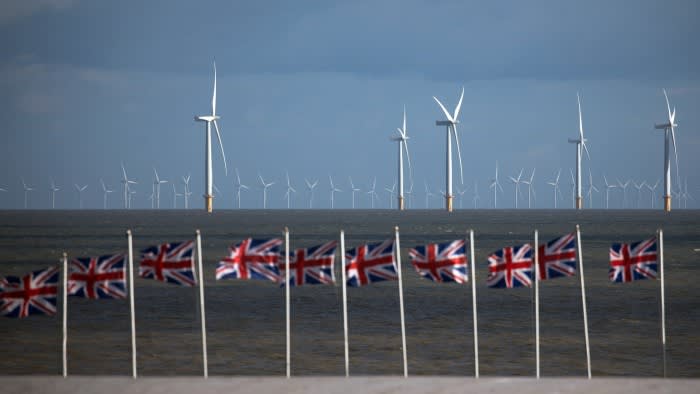Unlock the Editor’s Digest for free
Roula Khalaf, Editor of the FT, selects her favourite stories in this weekly newsletter.
The writer is chair of Frontier Economics and a former cabinet secretary
Contrary to what many have said about the Treasury, I know it welcomes ideas. And as its former permanent secretary, I feel obliged to suggest some answers to the key question facing this government. When it comes to a much needed increase in public investment, how might the chancellor, Rachel Reeves, do this without opening the flood gates to increased public spending and borrowing in an unsustainable way?
There is a growing consensus that more investment is needed to stimulate growth. But the reality is that current plans and fiscal rules leave precious little room for it — based on Office for Budget Responsibility projections, only 1.5 to 2 per cent of GDP. How can we enable investment that genuinely stimulates growth while reassuring markets that UK public finances are on a sustainable path?
One possibility is to promise to balance the current budget in three years rather than five and not to rely on borrowing alone for additional investment. If we’re serious about prioritising investment, that means tough choices — higher taxes or lower spending. The House of Lords economic affairs committee has just warned that it’s time for tough decisions on national debt: it is absolutely right.
But assuming the investments are worthwhile, borrowing should also be part of the answer. One problem with the current debt definition is that it doesn’t recognise the assets that might be purchased or created through investment. If the new National Wealth Fund leverages its balance sheet to buy a stake in a green energy start-up, the current rule counts the debt but not the value of the financial asset. Nor does the current debt rule reflect the value of any new transport infrastructure produced by government investment.
The Labour manifesto says that there should be a debt target but leaves some room as to what it should be. As the chancellor’s conference speech put it: “It is time that the Treasury moved on from just counting the costs of investments to recognising the benefits too.” The ONS already uses public sector net worth (PSNW) and public sector net financial liabilities (PSNFL), two measures of the government’s balance sheet with a long track record that relate to the IMF definition — one which many global investors understand. Both would do a better job of capturing financial benefits from future investments. PSNW would also capture the value of physical assets, like roads or buildings, built by government.
Neither is perfect, but it would make sense to include one or both definitions in assessments of overall debt sustainability. We should ditch the last government’s absurd debt rule, which requires debt to be falling between years four and five but says nothing about other years. Market credibility would be enhanced by asking the OBR to provide an independent assessment of debt sustainability using a measure like PSNFL alongside more traditional ones, and putting this front and centre.
The second required change is to have a capital plan stretching over a sensible time period. I would mimic the private sector and plan for much longer than traditional spending review periods: 10 years would make sense, allowing midcourse corrections for major shocks.
The third change would be to ensure that public investments were indeed likely to stimulate growth. The Treasury will need to scrutinise spending bids for optimism bias, including big investment projects submitted for the spring 2025 spending review.
One other approach is to bring in the private sector to add much needed rigour to assessing future benefits. It remains to be seen how successful Great British Energy and the National Wealth Fund will be in attracting private investment. Again, this will be helped by using different debt definitions. But an even more direct way is to create a stable, attractive and predictable climate. A good example is the recent offshore wind auction: successful bids should deliver real results without any need for government money up front.
It is worth emphasising that all public investment decisions should be based on non-financial as well as financial returns as set out in Treasury guidance in the Green Book. The argument for giving extra weight to investments yielding financial returns is that the public finances are currently in a dangerous state. The debt-to-GDP ratio is around 100 per cent and debt interest is the second-largest spending programme. This weighting could be eliminated when the public finances are sustainable, verified by the OBR.
Finally, Mario Draghi’s searing report on EU competitiveness shows that we are not alone and there is a way out. Why not demonstrate to the EU what it is missing by adopting his excellent recommendations first?
These changes would allow space for higher, worthwhile investments while retaining market credibility. Some can be done at the Budget, some will take longer. But it would be a massive contribution to growth, the government’s number one priority.
https://www.ft.com/content/b6dd4062-3948-4370-965e-db997e1c0eaf


